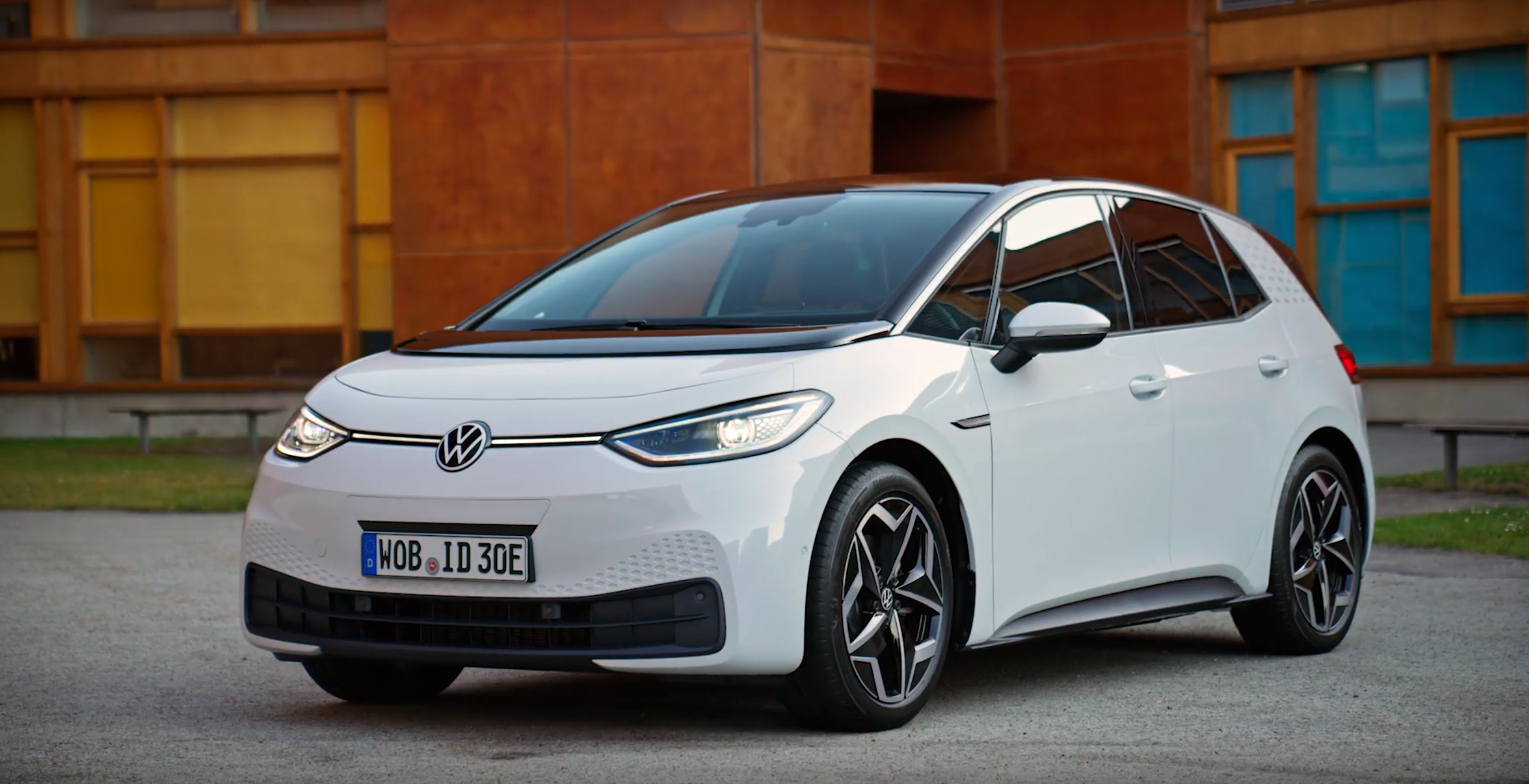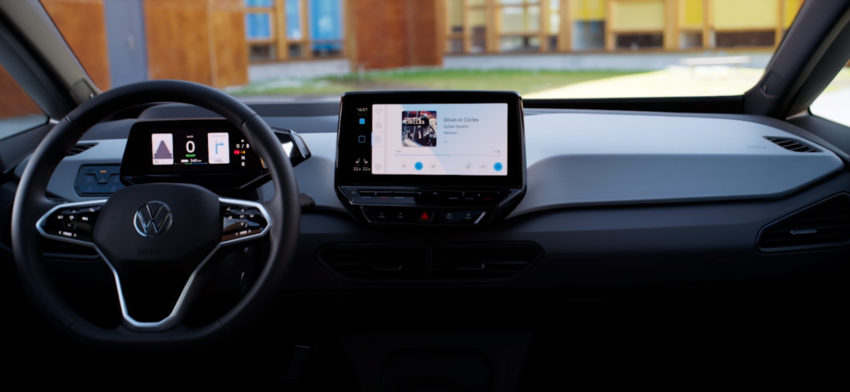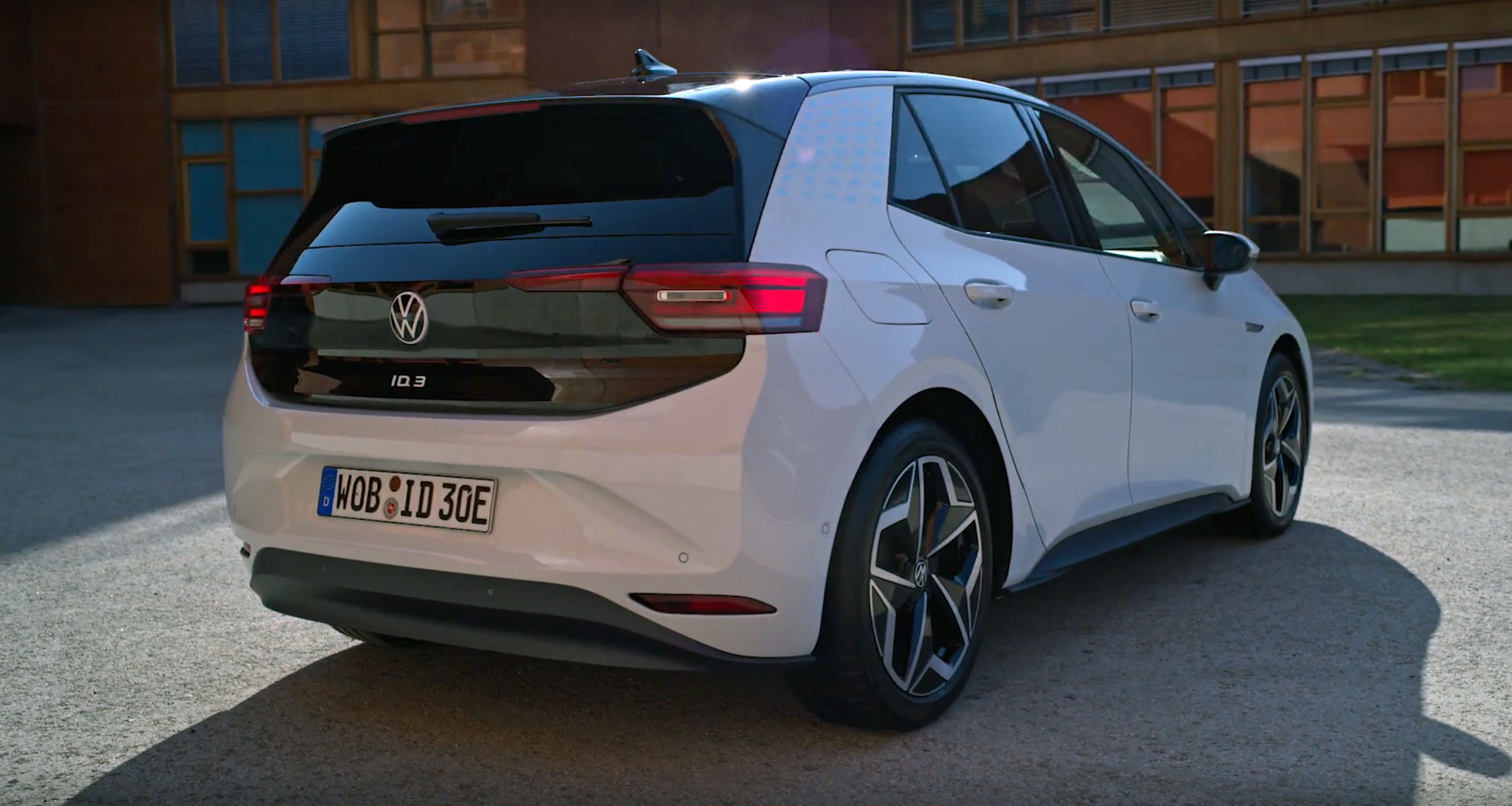
North Americans won’t get the new electric car from Volkswagen, but we’re talking about it because the VW ID.3 EV hatchback is a portend of things to come when the German automaker brings the larger members of its ID family here, most likely starting late next year or in the first half of 2021.
ID is Volkswagen’s new line of electric vehicles. The company has promised to follow the Euro-centric ID.3 with the crossover-styled I.D. Crozz, the ID Vizzion sedan, the ID Buzz – a modern twist on the iconic VW bus – and possibly the ID Buggy, an electric version of the dune buggies popularized in Southern California in the 1960s. There’s also a seven-seat SUV-cum-minivan styled model called the ID Roomzz.
[Estimated Reading Time: 3 min.]
How many will make it stateside is known only to VW’s product and marketing gurus (if they even know it all yet).
But the Crozz, Buzz and Buggy are pretty sure bets.
The Crozz – which uses the same platform as the “3,” was designed with American’s love of crossovers in mind. The Buzz is a direct and thoroughly modern descendant of a vehicle that helped establish VW in the U.S.
The ID Buggy is a cousin of the VW Beetle – at least of the Beetle frame and engine, which were used to great success by several generations of dune buggy designers to underpin vehicles such as the famed Meyers Manx.
The cars have only been seen as auto show concepts, until this week’s unveiling of the ID.3 at the Frankfurt auto show.
The ID.3’s interior is stripped-down modern, with a large touchscreen infotainment enter in the middle of the broad, flat dash. That screen is angled toward to driver and there’s a smaller – but still sizeable – digital driver info screen behind the slightly flat-bottomed steering wheel.

The dash has almost no dials or knobs, the seats have thin shells, but appear to be well-bolstered, and the shifter (for drive, neutral, reverse and regenerative braking) is a cube-shaped dial – one of the few – directly in front of the driver’s right hand when it is in the 2 o’clock position on the steering wheel.
VW isn’t releasing much yet in the way of specifications, but says it already has 30,000 advance orders for the ID.3’s “1st Edition” debut trim.
There will be three trim levels, the base, Plus and Max. All have either a 149- or 201-horsepower electric motor on the rear axle. Motor output is buyer’s choice and, along with battery size, helps determine the price. The larger motor delivers 229 lb.-ft. of torque. Electronic equipment, wheel sizes and other features escalate – along with price – as one moves up the ladder.
Along with the two motor options, customers will be able to specify one of three battery packs.
The base is a 45-kWh system good for up to 205 miles on the European measuring system which is more lenient that the U.S. system and more weighted toward heavy use in slow city traffic.
Next up is a 58-kWH pack rated at up to 261 miles on the Euro scale, followed by the top-of-line 77 kWh battery rated at 342 miles (European).
Top speed for all three is electronically limited at 100 mph.
Production of the ID.3 is slated to begin at the end of the year, with deliveries in Germany beginning by mid-2020.

